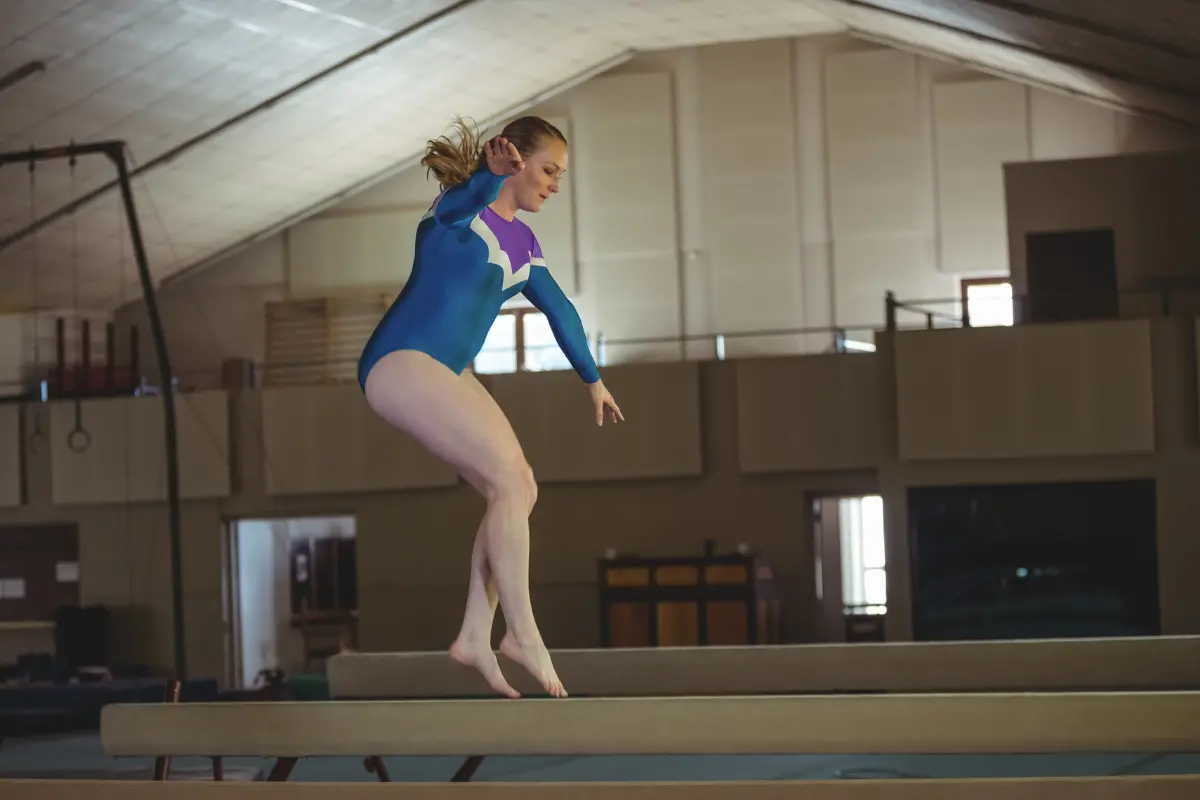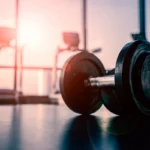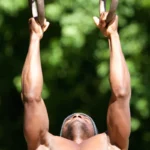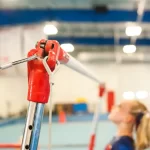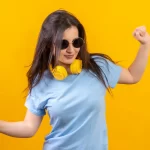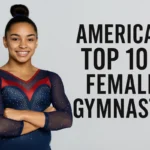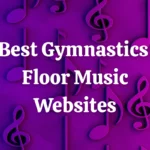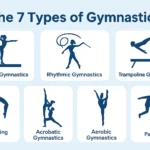The balance beam is one of gymnastics’ most demanding apparatuses. At just four inches wide, it doesn’t leave much room for error. Staying steady on the beam is part skill, part strength, and part mindset. With the right training and techniques, wobbling can be reduced and control can be mastered.
Why “No-Wobble” Matters (What Judges Actually See)
Balance on beam directly affects your score. Judges are trained to notice even the smallest corrections, and deduBalance on beam directly affects your score. Judges are trained to notice even the smallest corrections, and deductions add up quickly:
- Arm swings to regain balance → up to 0.10
- Trunk movements or hip shifts → up to 0.20
- Large steps or grabbing the beam → bigger deductions
- Falls → a flat 1.0 deduction
Stillness after skills, controlled landings, and minimizing corrections can be the difference between a clean score and one weighed down by small mistakes.
Source: gymnastics.sport
The Steadiness Blueprint
From posture to breath, every detail plays a role in keeping wobbles away.
1. Alignment: Your “Beam Column”
Balance begins with posture. Think of your body as a vertical column stacked directly above the beam.
- Head & eyes: Keep the chin neutral and fix your eyes on a steady point in front of you. This “quiet eye” strategy helps calm the body and reduce unnecessary corrections.
- Rib–hip stack: Imagine zipping from your pubic bone to your sternum. This prevents rib flare and locks your spine into a controlled position.
- Pelvis: A slight posterior tuck avoids swayback that shifts weight behind the beam.
- Hips & knees: Keep knees soft, not locked. Spiral thighs so kneecaps track in line with the beam, creating stability without stiffness.
- Foot tripod: Distribute weight evenly between the big toe, little toe, and heel. This tripod base maximizes surface contact and prevents rolling ankles.
📌 Why it works: Research shows gymnasts develop superior postural control compared to non-athletes. Proper alignment reduces corrective sway at the source, allowing steadiness before wobble even begins (PMC).
2. Arm Carriage: Built-In Stabilizers
Your arms are active tools for balance:
- Quiet shoulders: Keep them relaxed, steady, and free of unnecessary lifts or shrugs.
- Elbow position: Hold elbows slightly forward of the torso so arms are ready to counterbalance.
- Counterweights, not wipers: Think of your arms as subtle stabilizers, not windshield wipers swinging side to side.
- “Hold then move” principle: Set arms before the legs initiate a movement. This prevents reactive flailing — one of the most judge-deducted signs of instability.
📌 Why it works: Controlled arm carriage builds a natural stabilizing system. Instead of scrambling to recover after balance is lost, arms absorb small shifts quietly and invisibly.
3. Breath Sets Your Tempo
Your breath sets both rhythm and control:
- Exhale on effort, inhale on shape: Exhale during pushes, jumps, or landings; inhale as you rise into poses or transitions.
- Soft nose exhale: A controlled breath out through the nose during landings naturally braces the core.
- Rhythm and calm: Steady breathing keeps tempo consistent and prevents the stiff, shaky corrections judges can spot.
📌 Why it works: Breath connects core strength to movement. Syncing effort with breath creates stability from the inside out.
4. Footwork That Locks the Line
Every step tells the story of your balance. Precision in the feet creates stability for everything above.
- Relevé walks: Roll smoothly through the foot, keeping ankles tall and lifted. Avoid collapsing inward or outward.
- Toe–heel accuracy: Place each step along the exact center seam of the beam. Side-stepping shortens your base and invites wobble.
- Quiet heels: Land ball-flat and silent. Heavy or noisy steps usually signal a dropped posture or disengaged core.
📌 Why it works: Clean, centered footwork keeps weight stacked over the beam’s narrow line. Consistent placement builds rhythm, which judges interpret as confidence.
5. Gaze & Cognition: The Quiet Eye
Where your eyes go, your balance follows. Vision sets the tone before the body even moves.
- Pre-skill focus: Fix your gaze briefly on a specific point before starting a skill.
- Steady through action: Keep your gaze locked; darting eyes often lead to shifting posture.
- Quiet-eye strategy: Longer, steadier fixations are proven across sports to improve performance and reduce errors. On beam, this translates into steadier posture and fewer visible wobbles under pressure.
📌 Why it works: Visual focus anchors body alignment. A calm gaze reduces micro-corrections that judges can see.
Skill-by-Skill: Where Wobbles Sneak In (and How to Fix Them)
Even with strong basics, each beam skill comes with its own balance traps. Here’s how to spot the common symptoms, and correct them before deductions stack up.
Walks & Poses
Symptom: Ankles snake side to side.
Fix: Shorten the step length, press the big toe firmly into the beam, and keep eyes fixed ahead for 2–3 steps at a time.
Leaps & Jumps
Symptom: Landing hops or arm flails.
Fix: Soften the last step into the leap (avoid a sudden drop), drive forward and up, and spot the landing early. On reception, freeze for a full count to avoid “save-with-arms” deductions (USA Gymnastics).
Turns (½, Full, +)
Symptom: Turn drifts off line, ankle shakes.
Fix: Pre-load in high relevé with ribs stacked over hips. Start with ¼ turns and progress to fulls. Keep eyes level and finish by re-finding your spot.
Acro with Hand Support (Walkovers, Cartwheels)
Symptom: Hips swing off the rail.
Fix: Square the entry: front foot points straight down the beam, back leg squeezes to midline, and hands “spot” their placements before touching down.
Aerials & Saltos
Symptom: Chest drops on landing, trunk swings to save.
Fix: Land nose–sternum–pelvis stacked, with eyes quickly re-finding the spot. Train snap-downs into tall, soft posture so the torso doesn’t swing (judges can deduct up to 0.20; USA Gymnastics).
Handstands
Symptom: Banana back or walking the hands.
Fix: Grip the beam like tweezers, push tall through the shoulders, and knit the ribs in. Keep eyes on thumb marks. Start with 2–3 second holds, then progress into ½–1 turn dismount exits.
Troubleshooting by Symptom
Even disciplined gymnasts face balance hiccups. The key is learning to read the body’s signals and correct them at the source instead of overcompensating.
“I always wobble after my leap.”
- The issue: Landing with the chest behind the hips shifts the center of gravity backward.
- The fix: Cue “hips to spot” on every landing. Keep the supporting knee soft and rise tall, holding for a full count before moving on.
“My ankles shake on turns.”
- The issue: A weak relevé setup or rushed tempo forces the ankle to overcorrect.
- The fix: Pre-load higher into relevé, engage inner thighs, and slightly shorten the tempo. This steadies the ankle and locks the body as one unit.
“I save with big arm swings.”
- The issue: Over-reliance on arms makes wobbles obvious.
- The fix: Drill quiet-arm finishes after every skill. If a save is needed, recover from the ankle, then hips, using arms only as a last resort. Judges see small lower-body saves as controlled; arm flails signal instability (USA Gymnastics).
“My hips drift on cartwheels and walkovers.”
- The issue: Entering off-line with a turned front foot or loose back leg.
- The fix: Square the entry by pointing the lead foot straight down the beam, squeezing the back leg to midline, and visually spotting hand placements.
“I always shuffle on landings.”
- The issue: Chest and eyes drop forward, forcing recovery steps.
- The fix: Train snap-downs into tall posture. Land with nose–sternum–pelvis stacked and eyes immediately re-fixed on a spot.
📌 Takeaway: Every wobble has a root cause. By identifying whether the issue stems from posture, ankles, arms, or entry alignment, you can apply the right cue and transform shaky saves into clean, judge-proof steadiness.
